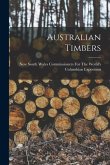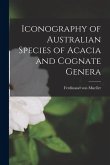- Broschiertes Buch
- Merkliste
- Auf die Merkliste
- Bewerten Bewerten
- Teilen
- Produkt teilen
- Produkterinnerung
- Produkterinnerung
A critical evaluation of the ecological hypotheses proposed to explain the distribution of Australian rainforests.
Andere Kunden interessierten sich auch für
![Australian Timbers Australian Timbers]() Australian Timbers18,99 €
Australian Timbers18,99 €![Illustrations of Australian Plants Collected in 1770 During Captain Cook's Voyage Round the World in H.M.S. Endeavour /by the Right Hon. Sir Joseph Ba Illustrations of Australian Plants Collected in 1770 During Captain Cook's Voyage Round the World in H.M.S. Endeavour /by the Right Hon. Sir Joseph Ba]() Illustrations of Australian Plants Collected in 1770 During Captain Cook's Voyage Round the World in H.M.S. Endeavour /by the Right Hon. Sir Joseph Ba17,99 €
Illustrations of Australian Plants Collected in 1770 During Captain Cook's Voyage Round the World in H.M.S. Endeavour /by the Right Hon. Sir Joseph Ba17,99 €![Illustrations of Australian Plants Collected in 1770 During Captain Cook's Voyage Round the World in H.M.S. Endeavour /by the Right Hon. Sir Joseph Ba Illustrations of Australian Plants Collected in 1770 During Captain Cook's Voyage Round the World in H.M.S. Endeavour /by the Right Hon. Sir Joseph Ba]() Illustrations of Australian Plants Collected in 1770 During Captain Cook's Voyage Round the World in H.M.S. Endeavour /by the Right Hon. Sir Joseph Ba18,99 €
Illustrations of Australian Plants Collected in 1770 During Captain Cook's Voyage Round the World in H.M.S. Endeavour /by the Right Hon. Sir Joseph Ba18,99 €![Iconography of Australian Species of Acacia and Cognate Genera Iconography of Australian Species of Acacia and Cognate Genera]() Ferdinand Von MuellerIconography of Australian Species of Acacia and Cognate Genera20,99 €
Ferdinand Von MuellerIconography of Australian Species of Acacia and Cognate Genera20,99 €![Illustrations of Australian Plants Collected in 1770 During Captain Cook's Voyage Round the World in H.M.S. Endeavour /by the Right Hon. Sir Joseph Ba Illustrations of Australian Plants Collected in 1770 During Captain Cook's Voyage Round the World in H.M.S. Endeavour /by the Right Hon. Sir Joseph Ba]() Illustrations of Australian Plants Collected in 1770 During Captain Cook's Voyage Round the World in H.M.S. Endeavour /by the Right Hon. Sir Joseph Ba17,99 €
Illustrations of Australian Plants Collected in 1770 During Captain Cook's Voyage Round the World in H.M.S. Endeavour /by the Right Hon. Sir Joseph Ba17,99 €![Iconography of Australian Salsolaceous Plants Volume 1-9 Iconography of Australian Salsolaceous Plants Volume 1-9]() Ferdinand MuellerIconography of Australian Salsolaceous Plants Volume 1-924,99 €
Ferdinand MuellerIconography of Australian Salsolaceous Plants Volume 1-924,99 €![Australian Salt-bushes Australian Salt-bushes]() Charles Howard ShinnAustralian Salt-bushes14,99 €
Charles Howard ShinnAustralian Salt-bushes14,99 €-
-
-
A critical evaluation of the ecological hypotheses proposed to explain the distribution of Australian rainforests.
Produktdetails
- Produktdetails
- Verlag: Cambridge University Press
- Seitenzahl: 360
- Erscheinungstermin: 26. Dezember 2007
- Englisch
- Abmessung: 229mm x 152mm x 21mm
- Gewicht: 584g
- ISBN-13: 9780521057875
- ISBN-10: 0521057876
- Artikelnr.: 23437982
- Herstellerkennzeichnung
- Libri GmbH
- Europaallee 1
- 36244 Bad Hersfeld
- gpsr@libri.de
- Verlag: Cambridge University Press
- Seitenzahl: 360
- Erscheinungstermin: 26. Dezember 2007
- Englisch
- Abmessung: 229mm x 152mm x 21mm
- Gewicht: 584g
- ISBN-13: 9780521057875
- ISBN-10: 0521057876
- Artikelnr.: 23437982
- Herstellerkennzeichnung
- Libri GmbH
- Europaallee 1
- 36244 Bad Hersfeld
- gpsr@libri.de
David Bowman is Professor of Forest Ecology in the School of Plant Science at the University of Tasmania. He uses a range of tools, including remote sensing and geographic information analysis, stable isotopes, ecophysiological analysis, mathematical modelling, biological survey and molecular analysis to understand how Australian landscapes have evolved in response to climatic change, varying fire regimes, the introduction of large vertebrate herbivores, and the impacts of contemporary and prehistoric management.
Preface
1. Introduction
2. What is Australian rainforest? 3. The sclerophyll problem
4. The edaphic theory I. The control of rainforest by soil phosphorus
5. The edaphic theory II. Soil types, drainage and fertility
6. The climate theory I. Water stress
7. The climate theory II. Light and temperature
8. The fire theory I. Field evidence
9. The fire theory II. Fire, nutrient cycling and topography
10. The fire theory III. Fire frequency, succession and ecological drift
11. The fire theory IV. Aboriginal landscape-burning
12. The fire theory V. Aridity and the evolution of flammable forests
13. Fire management and rainforest conservation
14. Summary
References.
1. Introduction
2. What is Australian rainforest? 3. The sclerophyll problem
4. The edaphic theory I. The control of rainforest by soil phosphorus
5. The edaphic theory II. Soil types, drainage and fertility
6. The climate theory I. Water stress
7. The climate theory II. Light and temperature
8. The fire theory I. Field evidence
9. The fire theory II. Fire, nutrient cycling and topography
10. The fire theory III. Fire frequency, succession and ecological drift
11. The fire theory IV. Aboriginal landscape-burning
12. The fire theory V. Aridity and the evolution of flammable forests
13. Fire management and rainforest conservation
14. Summary
References.
Preface
1. Introduction
2. What is Australian rainforest? 3. The sclerophyll problem
4. The edaphic theory I. The control of rainforest by soil phosphorus
5. The edaphic theory II. Soil types, drainage and fertility
6. The climate theory I. Water stress
7. The climate theory II. Light and temperature
8. The fire theory I. Field evidence
9. The fire theory II. Fire, nutrient cycling and topography
10. The fire theory III. Fire frequency, succession and ecological drift
11. The fire theory IV. Aboriginal landscape-burning
12. The fire theory V. Aridity and the evolution of flammable forests
13. Fire management and rainforest conservation
14. Summary
References.
1. Introduction
2. What is Australian rainforest? 3. The sclerophyll problem
4. The edaphic theory I. The control of rainforest by soil phosphorus
5. The edaphic theory II. Soil types, drainage and fertility
6. The climate theory I. Water stress
7. The climate theory II. Light and temperature
8. The fire theory I. Field evidence
9. The fire theory II. Fire, nutrient cycling and topography
10. The fire theory III. Fire frequency, succession and ecological drift
11. The fire theory IV. Aboriginal landscape-burning
12. The fire theory V. Aridity and the evolution of flammable forests
13. Fire management and rainforest conservation
14. Summary
References.









